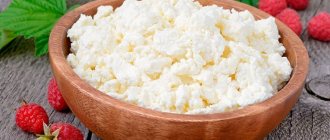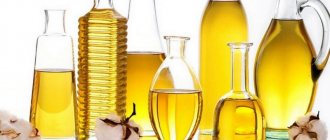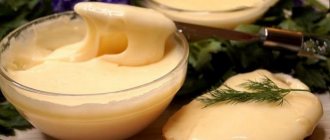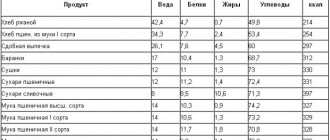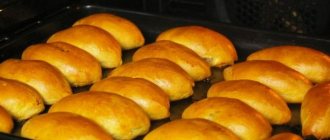The first mention of cottage cheese dates back to 1831. But according to some sources, there are claims that the first types of fermented milk product were made back in the 3rd century BC. e. A traveler walking through the desert filled a wineskin with warm sheep's milk, resulting in a curd mass under the influence of heat.
This method of preparation quickly spread throughout the ancient Roman Empire and Egypt. Today, there are many methods for calculating the calorie content of foods per 100 grams, which are popular in diets and proper nutrition. One of the essential ingredients of any diet plan is fermented milk cottage cheese.
Kinds
Usually, natural cottage cheese using traditional cooking techniques is divided into acid-rennet and acidic.
It all depends on the method of coagulation of proteins in milk and its saturation with fats. Acid-rennet curd is obtained through the use of a special enzyme (rennet or pepsin), which ensures milk coagulation during a neutral reaction with the addition of lactic acid bacteria starters for accelerated protein coagulation.
Such enzymes are widely used to produce cheeses, cottage cheese, and fermented milk products, both in the dairy industry and at home. An acidic curd product is made from skim milk by the natural coagulation of protein under the influence of lactic acid, which is obtained during the process of fermented milk fermentation.
This fermentation develops by adding additional starter to the milk.
A significant part of any type of cottage cheese contains a significant amount of liquid (up to 80%). Technologically, it is possible to obtain a fermented milk product with a low liquid content, but then it will taste dull and dry.
Depending on the properties of the raw material, there are several types of cottage cheese:
- Fat cottage cheese (12 - 23%) is the most high-calorie and nutritious type of fermented milk product, which contains complete milk protein.
- A classic product or medium-fat cottage cheese with a fat content of 4 - 10% retains all useful components as much as possible.
- A semi-fat product with a maximum fat content of about 2 - 3.8%, where all useful macro and microelements remain.
- Low-fat cottage cheese , which is the most popular in the diet menu, contains virtually no whey and has a maximum fat concentration of up to 1.8%. But when consuming this type of cottage cheese, calcium is absorbed 40% less than in other fatty varieties of the product, due to the low content of fat-soluble vitamin D. Low-fat fermented milk product also lacks vitamins E and A.
You should choose cottage cheese depending on the required protein and fat levels for each individual individually. The lower the fat content, the lower the amount of nutrients in the fermented milk product. If cottage cheese contains only 5% fat, it is ideal for dietary nutrition. In this case, its chemical composition is harmoniously combined with its nutritional value.
A product of this fat content is often recommended for children aged 6 months and older, as it is well absorbed by the child’s body, as well as for older people, due to the small amount of saturated fat.
For athletes, it is recommended to use a product with 9% fat content, because in this case protein and high calorie content are needed to gain muscle mass. For heavy physical activity, cottage cheese with 15% fat content is recommended.
Which cottage cheese is healthier
Cottage cheese is on the list of the most useful products recommended for consumption by people of any age. This applies to both fatty and low-fat types. It is impossible to say which is better, since the degree of impact on the body depends on the purpose of use. If for the sake of health improvement and prevention of vitamin deficiency, then preference is given to fat-containing. For weight loss, the one without fat is recommended. But the latter is inferior in taste: tart, dry, crumbly. And not everyone likes it.
Benefits of low-fat cottage cheese:
- There are no purines, and they are harmful to children and the elderly.
- Casein protein is present in large quantities, which makes the product dietary. It does not destroy joints, as it is easily absorbed.
- It has neutral acidity, which is useful for gastrointestinal pathologies.
Despite the low calorie content, such cottage cheese has one drawback - the scanty content of fat-soluble vitamins: A, E, D and some minerals (zinc, copper and fluorine).
It should be noted that calcium is more fully absorbed from fatty cottage cheese. But there is a category of people who cannot eat this product for medical reasons (high cholesterol). In low-fat it is practically absent, so the risk of developing atherosclerosis and the formation of cholesterol plaques is reduced to zero.
Calorie content, BJU
Cottage cheese (calorie content per 100 grams is calculated depending on the fat content) is considered one of the most popular fermented milk products.
Nutritional value of cottage cheese
The main ingredient in cottage cheese is the milk protein casein, which gives it its white color. This protein is absorbed more slowly and efficiently, while it helps restore and even build muscle mass, which is especially important for athletes. Interesting: 100 grams of cottage cheese contains the same amount of protein as two chicken eggs.
Cottage cheese. Calorie content and chemical composition.
Fermented milk product is low in carbohydrates, so it is often used in low-carb diets. Most of the carbohydrates in cottage cheese come from natural milk sugar and lactose and are an important component in the product, as they serve as a source of energy for the body.
Phosphorus in cottage cheese helps the body process fats and carbohydrates, and is also involved in the production of protein. Like calcium, it is important for the health of teeth and bones, paired with B vitamins, it helps to normalize the functioning of the human kidneys and nervous system. In addition, phosphorus helps balance acid levels in the body by acting as a natural alkalizing agent.
In addition to the energy and nutritional value of proteins, fats and carbohydrates, the product is rich in micro and macroelements, minerals and vitamins, which take an active part in the body's metabolic processes, and make it a complete and healthy food for any person.
The composition of cottage cheese per 100 grams of product is given in the table:
| Vitamins, mg per 100 g of product | Minerals, mg per 100 g of product | ||
| A | 42 | Calcium | 178 |
| IN 1 | 0,05 | Iron | 0,1 |
| AT 2 | 0,22 | Potassium | 218 |
| AT 3 | 1 | Magnesium | 16 |
| AT 6 | 0,12 | Sodium | 64 |
| AT 12 | 0,3 | Phosphorus | 129 |
| WITH | 0 | Iodides | 9 |
| D | 0,21 | Selenium | 9 |
| E | 0,23 | Zink | 0,5 |
Calorie content of fermented milk product
Cottage cheese (calorie content per 100 grams of product depends on the fat content in the raw materials from which the lactic acid product was made) contains the optimal amount of useful microelements. At the same time, the glycemic index of cottage cheese is quite low, about 30 units, so it is often used in medical and dietary nutrition. GI is an indicator of the effect of a food on blood sugar levels.
There are several groups:
- low GI from 0 to 55 units;
- average 56 – 69 units;
- high above 70 units.
This value, like that of cottage cheese, is comparable to the glycemic index of some green vegetables and unsweetened fruits, which makes it possible to consume it even for people suffering from diabetes.
However, it is worth remembering that when sugar, candied fruits, nuts and dried fruits are artificially added to a fermented milk product, the GI increases sharply. In addition to the fact that cottage cheese is completely absorbed by the body, it has no tissue or cellular structure and contains balanced protein.
A reference table of BZHU of different types of cottage cheese will give an idea of the nutritional value of the product:
| Indicators | Fat cottage cheese, 23% | Classic cottage cheese, 8% | Classic cottage cheese, 5% | Cottage cheese, 2% | Cottage cheese, 1% | Cottage cheese, 0% |
| Proteins, g | 9,55 | 15,0 | 17,2 | 18 | 16,3 | 16,5 |
| Fats, gr | 21,44 | 8,0 | 5 | 2 | 1 | 0 |
| Carbohydrates, g | 16,99 | 1,5 | 1,8 | 3,3 | 1,3 | 1,3 |
| Calorie content, kcal | 301,07 | 138,0 | 121 | 103 | 79 | 71 |
Nutritional value and composition
Full-fat cottage cheese contains complete milk protein, as well as a huge amount of minerals. The ratio of BJU in a product with a fat content of 18% is: fats - 50.9%, proteins - 41.5%, carbohydrates - 7.6%. Per 100 g of product there are 14.67 g of proteins, which is 21% of the daily value, 18 g of fat (24%), 2.7 g of carbohydrates (1%). The nutritional value and composition of the product are represented by the following elements:
- cholesterol;
- saturated fatty acids;
- mono- and disaccharides;
- organic acids;
- water.
Minerals:
- cobalt;
- fluorine;
- manganese;
- molybdenum;
- selenium;
- copper;
- iron;
- zinc;
- potassium;
- chlorine;
- sodium;
- sulfur;
- phosphorus;
- calcium;
- magnesium.
Vitamins: groups B, A, PP, C, D, E, H, choline, beta-carotene, nicotinic and ascorbic acids.
Benefit
Cottage cheese (calorie content per 100 grams of fermented product, satisfies the body's daily need for most nutrients) is known for its unique properties and benefits.
In addition to the fact that adding cottage cheese to various dishes improves their taste, the lactic acid product has a number of benefits for human health:
- Improves digestion, has the ability to maintain an optimal balance of stomach acidity levels. Adding cottage cheese to your diet helps digest other foods, making it easier for the whole body to absorb food.
- Promotes weight loss; the calcium contained in cottage cheese limits the production of cortisol, which can provoke an increase in body fat.
- Cottage cheese is an excellent source of phosphorus and calcium, which helps strengthen the structure of teeth and bones. This is the most reliable source of meeting the body's calcium needs. Regular consumption of cottage cheese protects against diseases such as osteoporosis, arthritis, and reduces the likelihood of bone fractures and tooth decay.
- Due to the presence of live probiotic cultures in the product, it improves digestion processes and accelerates metabolism in the body, thereby helping to improve immunity.
- Systematic consumption of cottage cheese improves mental activity, concentration, and also increases the tone and physical activity of the body.
- The protein contained in cottage cheese is quickly absorbed and promotes the regeneration of muscle fibers, so cottage cheese is recommended for all athletes. Unlike protein meat and legumes, eating cottage cheese does not cause gas or heartburn.
- The amino acids contained in the fermented milk product, in combination with the group of B vitamins, have a beneficial effect on the central nervous system. B vitamins normalize metabolism. Vitamin B12 improves brain efficiency and helps the body absorb iron. Riboflavin converts carbohydrates into energy.
- Dairy products, especially cottage cheese, are rich in protein, calcium and vitamin D, so their regular consumption is beneficial for women's health, in particular for stabilizing hormone levels.
- Cottage cheese has restorative and healing properties; it is indicated for ulcers and gastritis, and for diseases of the endocrine system.
- Cottage cheese with a low calorie content of up to 5% per 100 grams should be consumed by children from six months and pregnant women to compensate for the lack of calcium in the body.
- Cottage cheese is good for older people, as it has the special property of strengthening joints and preventing dementia.
- Lightly salted cottage cheese helps lower blood pressure. The high content of methionine in the product helps reduce cholesterol levels in the blood. Due to this, blood circulation in the vessels improves and the risks of developing cardiovascular diseases are minimized.
- Magnesium in cottage cheese maintains normal blood sugar levels. This is a useful product for people suffering from type II diabetes, as it helps the body fight the disease and minimize its negative impact.
- The invaluable composition of cottage cheese is simply necessary for the female body. The minerals it contains, vitamin E and zinc, have a beneficial effect on the skin, nails and hair. Along with including cottage cheese in the menu, the animal product is often used as a homemade skin care product. Cottage cheese face masks make the skin soft, velvety and radiant.
- It is well suited for diets, since, despite the calorie content, the product quickly saturates the body and retains this feeling for a long time.
It is important to remember that only high quality and naturalness of the product is the main necessity for obtaining effective nutritional results. Interesting: Goat cheese contains much more calcium than its cow's milk counterpart.
Full-fat or low-fat cottage cheese
Currently, several types of cottage cheese are produced: low-fat, low-fat, semi-fat and full-fat. Increasingly, athletes and those who want to lose weight choose a low-fat product, which they consider the healthiest. Is this really true, which cottage cheese is healthier: fat or low-fat?
Please note that low-fat cottage cheese has a fat content of 1.8%. It is prepared from low-fat milk, into which beneficial components are introduced from outside. Many scientists agree that low-fat cottage cheese contributes to disruption of proper metabolism.
Harm
Cottage cheese is a fairly versatile product that has a number of benefits, especially for people who are lactose intolerant. Although the product helps reduce weight, regular use may lead to weight gain. It can also be quite a heavy product for people with gastrointestinal diseases and a tendency to constipation.
In people suffering from arthritis, intensive consumption of cottage cheese can trigger the development of joint pain. The sodium content in 100 grams of fermented milk product is 40% of the body's daily requirement for this microelement, which plays an important role in maintaining optimal water-salt balance in cells.
With excess sodium, some negative aspects may appear in the form of:
- water retention;
- swelling;
- swelling;
- weight gain.
Such side effects may be temporary, but with frequent cottage cheese diets, when the product becomes the main source of nutrition and excessive amounts of sodium enter the body, quite complex problems can develop.
Namely:
- high blood pressure;
- kidney dysfunction;
- heart failure;
- risks of heart attack and stroke.
Cottage cheese does not contain fiber. The recommended daily intake of dietary fiber is 25 grams for women aged 19 to 50 years and 40 grams for men aged 19 to 55 years. Lack of fiber negatively affects the functioning of the gastrointestinal tract and can lead to the development of constipation, diabetes, vascular atherosclerosis and other undesirable consequences.
Important: such problems can only arise with systematic consumption of cottage cheese, without adding additional foods to the diet. The recommended daily dose of the product should not exceed 250 grams.
How did cottage cheese appear?
The first appearance of cottage cheese as a food product is mentioned 4000 years ago. People created legends about the appearance of this food.
An ancient Eastern tale about an Arabian merchant tells that the traveler took with him milk in a bag from the stomach of a sheep. The heat and rennet from the walls of the bag transformed the milk into two new products. The solid white mass, which quenched hunger and restored the wanderer’s strength, began to be called cottage cheese, and the liquid mass, whey, saved the merchant from thirst and replaced water. Legend claims that it was eastern traders who were the discoverers of cottage cheese and cottage cheese.
In ancient Rome, already in the 1st century AD, this treat was eaten every day by all classes. Roman scientists and writers Marcus Terence Varro and Lucius Columella left written evidence of this. In India, the product is considered a gift from nature.
In Rus', this food was traditionally prepared in a Russian oven; for this purpose, curdled milk was simmered in pots at low temperature. The resulting mass was hung in linen bags to allow the whey to drain. Then the process was repeated two more times. The result was hard cheese - that’s what this product was called in ancient Rus' and was stored in cellars in earthenware, packed tightly and filled with baked milk.
The beneficial properties of cottage cheese and its wonderful taste are loved by people on many continents; it has remained with us forever and still gives us its benefits.
Contraindications
It is prohibited to consume fermented milk products of animal origin in case of individual intolerance, allergic reactions to cow protein, atherosclerosis and serious kidney diseases.
It is also worth considering expiration dates, storage conditions and freshness of the product, otherwise poisoning may not be avoided.
Calorie content of cottage cheese with sour cream, sugar, honey, raisins
Adding any ingredients containing fructose and carbohydrates will increase the calorie content of the cottage cheese. The product goes well with sour cream, bananas, raisins, dates, honey and sugar. The value indicator when adding 10% sour cream will be equal to 110 kcal, provided that the cottage cheese is low-fat, and 105 units more if it is homemade. The value increases if components with a high fat content are taken.
The mixture “cottage cheese (2%) + sour cream (20%) + sugar (2 tbsp)” is estimated at 150 kcal.
When mixing 90 g of the considered low-fat cottage cheese with 10 g of raisins, the number of calories will be only 90. If you mix a 9% product in the same proportions, the value will increase by 60 kcal, homemade - by 67 kcal. It is very useful to regularly eat a mixture with honey during breastfeeding or pregnancy, but you should pay attention to the allergenicity of the sweet component. On average, the energy value of a dessert ranges from 120 to 150 kcal. It all depends on the fat content of the product and the type of honey. For those who love milk, look at the calorie content table for this product, and read the calories in sour cream here.
Menu for diet
The cottage cheese diet is a short diet designed to quickly lose a couple of extra pounds. Nutritionists do not recommend giving preference to low-fat cottage cheese when dieting and proper nutrition, since the body will not receive enough essential nutrients.
It is best to opt for a fermented milk product with 2 to 5% fat content. It is preferable to eat the treat in the first half of the day, or better yet, for breakfast, then the body will need at least two hours to digest the product.
Advantages and disadvantages
The obvious benefit of the cottage cheese diet is that it really works, since a sharp reduction in calories and giving up fast carbohydrates helps you easily lose weight in a short period. This diet is most often designed for a short period of time, from three to seven days. It is easy to follow and does not require complex recipes.
At the same time, a diet high in protein helps you feel fuller longer and reduces the likelihood of overeating. Like any dietary restriction, the cottage cheese diet has its drawbacks. If you eat only cottage cheese during the day, the body will not receive all the nutrients necessary for its normal functioning.
In the long term, low-calorie diets such as the cottage cheese diet can cause fatigue, nausea, a general feeling of weakness, loss of muscle tissue, which in turn provokes a slowdown in the body's metabolism and loss of cellular water balance.
Menu for the week
Cottage cheese (calorie content increases per 100 grams when adding fresh fruits, nuts or seeds) will help you lose a couple of extra pounds if you just need to fit into a little black dress for the holiday. To further enrich your diet with nutrients, you can diversify your diet with foods high in fiber.
It is also necessary to drink enough water or decoctions throughout the day. There are no official versions of cottage cheese diets; this implies a nutrition plan where you can eat cottage cheese with every meal for at least three days.
You should avoid alcohol, carbonated and sweetened drinks, and fruit juices. Today, the fermented milk product is successfully used in salads, baked dishes, confectionery, sandwiches, omelettes, salad dressings and baked goods. Cottage cheese can be combined with fish, meat, eggs, vegetables and mushrooms.
One of the cottage cheese diet options is shown in the table:
| № | Products | Description | Nutritional value, BJU/Kcal per 100 g of product |
| 1 day | Cottage cheese 260 g, lettuce 2 bunches, apples 2 pcs. | Using a blender, beat all ingredients, add 2 teaspoons of lemon juice, salt and pepper to taste. The finished sauce can be consumed with rye bread, potatoes - 100 g, ham - 160 g. | 8,14/8,91/4,92/133,41 |
| Day 2 | Baked cod fillet - 200 g, cottage cheese - 200 g, pickles - 100 g, chicken egg, potatoes - 300 g, parsley. | Cottage cheese mixed with parsley, finely chopped egg and pickles, eat three times a day with potatoes and fish | 9,69/2,61/14,84/124 |
| Day 3 | Cottage cheese - 200 g, grated cheese - 40 g, green peas - 100 g, cauliflower - 200 g, boiled carrots - 400 g, egg whites - 2 pcs. | Vegetables are cut into small pieces, laid out in a mold, and topped with a mixture of cottage cheese, grated cheese and egg whites. Baked in the oven for 30 minutes | 6,22/3,23/4,94/72,66 |
| 4 day | Cottage cheese - 200 g, grated cheese - 40 g, bread - 100 g. | The cheese is grated, seasoned with pepper and salt, mixed with cottage cheese and spread on bread. | 15,04/9,06/15,56/207,41 |
| 5 day | Cottage cheese - 300 g, strawberries - 200 g, lemon juice - 1 tbsp, muesli - 100 g. | Cut the strawberries, lay them out in layers: muesli, cottage cheese and berries. Sprinkle with lemon juice. | 10,29/5,65/14,66/149,71 |
| Day 6 | Cottage cheese - 250 g, yolks - 2 pcs, semolina - 0.5 cups, rhubarb root - 200 g, starch - 1 tbsp. | Mix cottage cheese with yolks, add semolina and egg whites. Pre-boil the chopped rhubarb for two minutes and add to the total mass. Bake the casserole in the oven for 30 minutes | 9,65/6/14,7/152,78 |
| Day 7 | Oatmeal - 300 g, cottage cheese - 150 g, apples - 2 pcs, banana - 1 pc. | Oatmeal can be mixed with cottage cheese and an apple or any other fruit. | 4,16/2,26/11,72/85,63 |
Cottage cheese recipes step by step
Over the past millennia, hundreds of different recipes for cottage cheese dishes have been created in the world - they differ in local characteristics, flavor, and method of preparation. Below are options for classic Eastern European cuisine, the most adapted and in demand in the post-Soviet space.
Cottage cheese pancakes
Syrniki is a classic Slavic dish that could be found on the table of any family that regularly uses dairy and fermented milk products for food. They are healthy, nutritious, easy to prepare, and suitable for your everyday diet.
Ingredients:
- Half a kilo of medium fat cottage cheese;
- Three tablespoons of flour;
- 2–3 tablespoons sugar;
- Several fresh eggs;
- Sunflower oil, 50 grams of raisins, flour.
Preparation:
- Rinse and steam the raisins in warm water;
- Mix cottage cheese with sugar and strain thoroughly through a medium-mesh sieve;
- Add cooked eggs and 1 cup flour to the mixture. Knead the resulting consistency thoroughly, then add the raisins and mix thoroughly again;
- Prepare a work surface with breading (a thin layer of flour on the board). Lightly wet your hands and form the prepared dough into small cakes, rolling them in flour;
- Leave the prepared cakes for 10 minutes, then roll them in breading again;
- Pour a sufficient amount of oil into the frying pan, heat the pan over low heat and fry the tortillas for 1.5–2 minutes on each side until fully cooked;
- Ready cheesecakes are served hot; if necessary, sour cream is added to them in a separate bowl.
Adviсe:
- Fry the flatbreads until golden brown, preferably covering the pan with a lid - this way the cheesecakes will turn out juicy and soft;
- Do not use too much breading - this will spoil the taste of the final product;
- The dough should be thick, not stick to your hands and look like a classic curd mass;
- Fresh dry cottage cheese is suitable for cheesecakes - this way their taste will be perfect.
Cheese casserole
Curd casserole is an ancient Slavic version of British pudding and Italian lasagna, a tasty, healthy and relatively easy-to-prepare dish that is loved by young and old alike.
Ingredients:
- 300 grams of cottage cheese;
- 4 tablespoons of semolina;
- ½ cup sour cream 15 percent fat;
- 2 eggs;
- 4 tablespoons sugar;
- 100 grams of raisins;
- 1 packet of baking powder;
- A pinch of vanillin;
- ¼ teaspoon salt, vegetable oil.
Preparation:
- Wash and steam the raisins in warm water;
- Mix semolina with sour cream and set aside for 15 minutes;
- Place cottage cheese, a mixture of semolina and sour cream, vanillin, the contents of 1 sachet of baking powder and salt in a container, then mix thoroughly, using a blender. The output should be a paste-like mixture without lumps;
- Pour pre-beaten eggs with sugar into the mixture (they should have a thick, stable foam) and mix gently;
- Add prepared raisins and stir again;
- Grease a baking dish with oil, sprinkle it with semolina;
- Pour the mixture into the mold, then place the workpiece in the oven at 180 degrees and bake for ¾ hour;
- Remove the casserole, let it cool slightly until warm, then cut the dish and place it on plates;
- Cottage cheese casserole served warm with sour cream.
Adviсe:
- Choose only homemade cottage cheese for the dish;
- Do not use flour - there is semolina as a substitute. With it, the casserole will retain its magnificent shape and be as tasty as possible;
- Observe temperature conditions. If your oven cannot maintain a constant temperature of 180 degrees, then you will have to stay at the oven and vary the temperature so that the bottom layer of the dish does not burn and the top layer is sufficiently baked.
Cottage cheese cheesecake
Cheesecake is a relatively new name for Russia, borrowed from American cuisine. This term usually means a cheese-containing dessert; in our case, instead of the classic hard Philadelphia cheese, homemade cottage cheese is used.
It is noteworthy that this dish is not originally American, but came to the country from old Europe - cheesecakes first began to be prepared in Ancient Greece (the athletes of those times were fed delicious desserts at the Olympics).
Ingredients:
- For the cream - ½ kilogram of homemade full-fat cottage cheese, 100 grams of 35 percent cream, 150 grams of sugar, 5 yolks and 4 whites, a tablespoon of flour and jam with powdered sugar for serving;
- For the dough - 170 grams of flour, 1 egg, 100 grams of chilled butter margarine, 50 grams of powdered sugar and a little salt.
Preparation:
- Three margarine on a fine grater, adding salt and flour;
- Add powdered sugar and the contents of the egg to the mixture, then gently knead the dough;
- Wrap the resulting dough in film and place it in the refrigerator for ½ hour;
- Rub the cottage cheese through a fine sieve;
- Separate the yolks and whites;
- Add the yolks, 1 piece at a time, to the curd mass, beating slowly with a mixer, then add flour and sugar, also mixing thoroughly and slowly. The last stage of working with the mixer is adding cream to the consistency;
- In a separate bowl, beat the egg whites and mix the finished mixture with our curd mass;
- Roll out the chilled dough into a thin layer (no more than 4 millimeters), then place it in the mold;
- Carefully spread the cream onto the dough;
- Turn on the oven at 170 degrees and bake for 40 minutes;
- Reduce to 150 degrees and bake for another 20 minutes;
- The last stage is 150 degrees and 12 minutes;
- Leave the cheesecake in the oven with the door open for 1 hour;
- Cut, serve with powdered sugar/jam, and serve at room temperature.
Adviсe:
- Follow the instructions strictly, especially regarding volumes and weights of ingredients;
- Bake carefully, gradually lowering the temperature, as stated in the instructions - this way the cheesecake will become golden brown and will not burn or crack;
- You can decorate the finished dish not only with jam or powdered sugar - liquid chocolate, syrup and even marmalade are also suitable.
Cottage cheese cookies
Sometimes you want to brighten up the gray days of everyday life and pamper your family with something tasty, but you don’t have the strength or desire for a multi-hour gastronomic masterpiece. The solution could be cottage cheese cookies - very tender, nutritious and also easy to prepare.
Ingredients:
- 200 grams of semi-fat cottage cheese;
- 100 grams of butter (not spread!);
- 1 full glass of flour;
- 4 tablespoons sugar;
- ¼ teaspoon of soda;
- Vegetable oil.
Preparation:
- Mash the cottage cheese thoroughly using a fine-mesh sieve;
- Melt the butter, cool it and add to the curd mass, adding flour and soda and kneading the dough;
- Wrap the dough in film and place in the refrigerator for two hours;
- Roll the dough into small balls no larger than an average walnut, form them into flat cakes and bread them in sugar, folding the products into a “bud” - the output should be “triangles”;
- Cover a baking sheet with parchment paper, grease with oil, place the liver on it and bake at 200 degrees for about 20 minutes;
- Cool the cookies until warm and serve.
Adviсe:
- After cooking, cookies can be decorated with powdered sugar;
- The products are suitable for both simple tea drinking at home and for treating guests;
- Despite the abundance of tasty ingredients, the calorie content of such liver is relatively small, so you can safely consume 5-6 pieces for your pleasure without harming your figure.
When to expect an effect
How long the cottage cheese diet lasts is an individual choice. Real changes can be noticed already on the third day. But you can’t torture yourself to the point of fainting from hunger. After all, any diet will be effective if you supplement it with feasible physical activity, walking or regular gymnastics at home.
Contraindications for the diet apply to those who have allergic reactions to dairy products, kidney and liver diseases, and metabolic disorders. The diet should not be used by pregnant or lactating women, as well as adolescents under 18 years of age.
The success of any diet involves not only calculating calorie content per 100 grams, but also choosing quality products. Therefore, when purchasing homemade cottage cheese, it is important to know that a bitter taste will indicate low quality milk, and a sour taste indicates that the product is not fresh.
When the curd mass is hard, such curd was prepared in violation of technology, which means it does not contain useful vitamins and most microelements. If you rub the cottage cheese between your fingers, you will get an oily liquid that will roll into lumps. A low quality product will feel sticky to the touch.
Fat content
Cottage cheese according to the percentage of fat per 100 g can be classified into the following types:
- fat cottage cheese - 18%,
- bold - 9%;
- low fat - 3-4%;
- low fat - no more than 1.8%.
Often on packs of dietary low-fat cottage cheese you can see the inscription that the fat content is 0%. In fact, this is not entirely correct information; even in such cottage cheese, tenths of a percent of milk fat are still present.
The fat content of homemade cottage cheese may fluctuate slightly in one direction or another. This is because the fat content of whole cow's milk may not always be the same. Its fat content indicators depend on a number of factors, for example, the breed of cows, their productivity, feed, time of year, etc.
Standards for consumption and storage of cottage cheese
This dairy product is undoubtedly healthy and helps you lose weight, but it is still a natural protein-calcium concentrate, and therefore you should observe moderation when consuming it. Excess protein can negatively affect kidney function.
And a product with high fat content increases cholesterol levels, which leads to obesity and the development of atherosclerosis. Granular cottage cheese is more useful, although it also has some contraindications, such as individual intolerance.
Is it possible to eat cottage cheese while losing weight?
Cottage cheese is not only important for the body; when consumed, you quickly feel full. It allows you to eat a varied diet without gaining excess weight, normalizes digestion, and helps remove toxins from the body.
The product has a lipotropic effect (increases fat metabolism), regulates blood sugar and cholesterol levels. The high calcium content in cottage cheese not only strengthens bone tissue, but also, when interacting with essential amino acids, activates fat burning.
Despite the opinion that such food is indispensable for dietary nutrition, more and more information is emerging that low-fat cottage cheese (0.1 - 0.8%) does not bring benefits to the body. If there is a deficiency of fat in the functioning of the body, serious disturbances can occur. For weight loss while maintaining good nutrition, a product with a fat content of 1.8 to 5% is better.
It is also necessary to remember that during industrial production, trans fats, preservatives, stabilizers and other harmful components can be added to cottage cheese. For example, starch is often used to improve consistency.
You can check its presence by adding pharmaceutical iodine. If iodine spots turn blue, it means that this product contains starch, which increases its calorie content and slows down the process of weight normalization. Typically, starch is found in paste-like curds and products labeled as “curd product.”
To lose weight and stay healthy, it is better to buy regular low-fat cottage cheese and add fruits, berries and other ingredients to it yourself.
